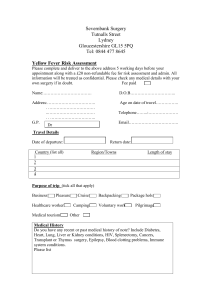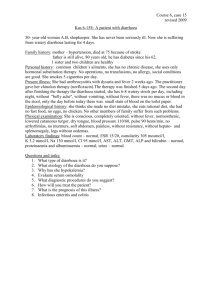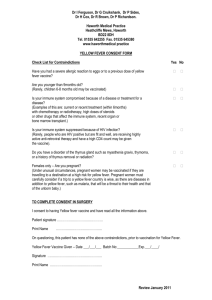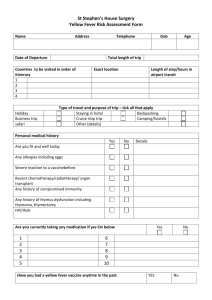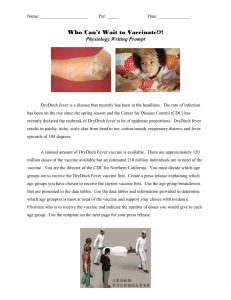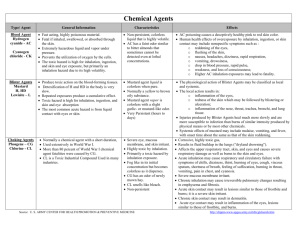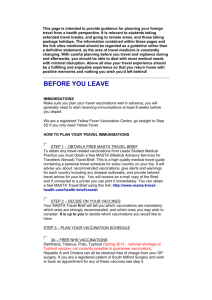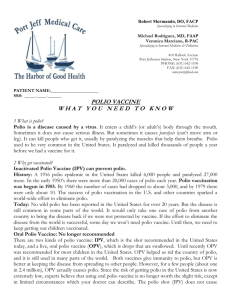Assignment4
advertisement
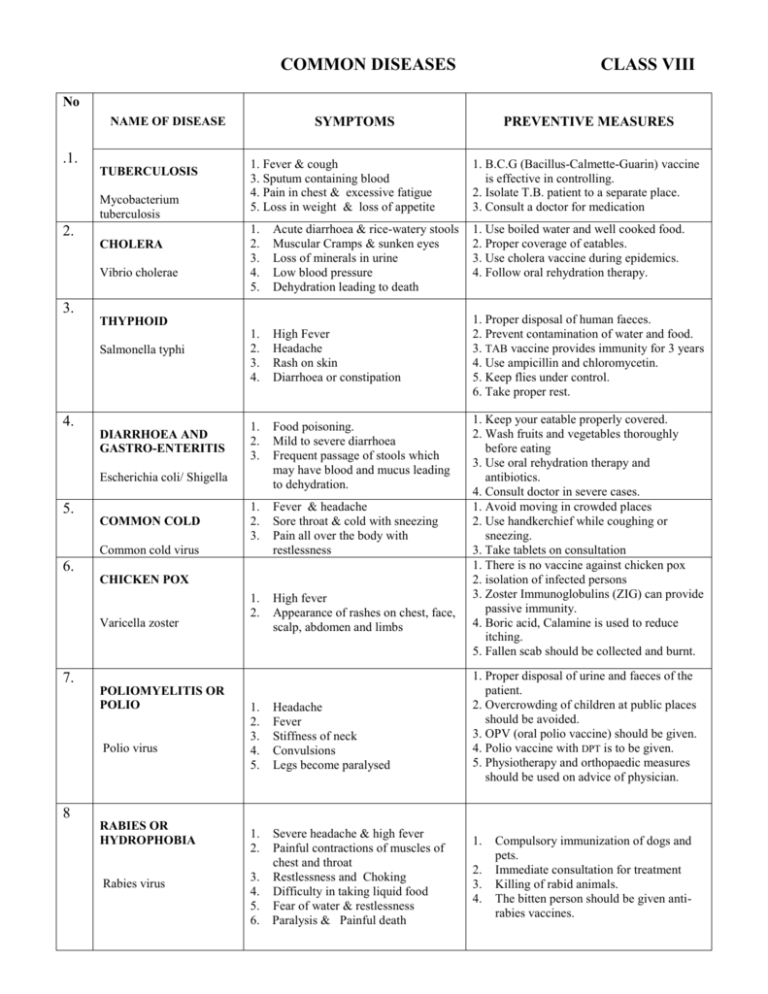
COMMON DISEASES CLASS VIII No SYMPTOMS NAME OF DISEASE .1. PREVENTIVE MEASURES 1. Fever & cough 3. Sputum containing blood 4. Pain in chest & excessive fatigue 5. Loss in weight & loss of appetite 1. B.C.G (Bacillus-Calmette-Guarin) vaccine is effective in controlling. 2. Isolate T.B. patient to a separate place. 3. Consult a doctor for medication 1. 2. 3. 4. 5. Acute diarrhoea & rice-watery stools Muscular Cramps & sunken eyes Loss of minerals in urine Low blood pressure Dehydration leading to death 1. Use boiled water and well cooked food. 2. Proper coverage of eatables. 3. Use cholera vaccine during epidemics. 4. Follow oral rehydration therapy. Salmonella typhi 1. 2. 3. 4. High Fever Headache Rash on skin Diarrhoea or constipation DIARRHOEA AND GASTRO-ENTERITIS 1. 2. 3. Food poisoning. Mild to severe diarrhoea Frequent passage of stools which may have blood and mucus leading to dehydration. 1. 2. 3. Fever & headache Sore throat & cold with sneezing Pain all over the body with restlessness 1. 2. High fever Appearance of rashes on chest, face, scalp, abdomen and limbs TUBERCULOSIS Mycobacterium tuberculosis 2. CHOLERA Vibrio cholerae 3. THYPHOID 4. Escherichia coli/ Shigella 5. COMMON COLD Common cold virus 6. CHICKEN POX Varicella zoster 7. POLIOMYELITIS OR POLIO Polio virus 1. 2. 3. 4. 5. Headache Fever Stiffness of neck Convulsions Legs become paralysed 1. 2. Severe headache & high fever Painful contractions of muscles of chest and throat Restlessness and Choking Difficulty in taking liquid food Fear of water & restlessness Paralysis & Painful death 1. Proper disposal of human faeces. 2. Prevent contamination of water and food. 3. TAB vaccine provides immunity for 3 years 4. Use ampicillin and chloromycetin. 5. Keep flies under control. 6. Take proper rest. 1. Keep your eatable properly covered. 2. Wash fruits and vegetables thoroughly before eating 3. Use oral rehydration therapy and antibiotics. 4. Consult doctor in severe cases. 1. Avoid moving in crowded places 2. Use handkerchief while coughing or sneezing. 3. Take tablets on consultation 1. There is no vaccine against chicken pox 2. isolation of infected persons 3. Zoster Immunoglobulins (ZIG) can provide passive immunity. 4. Boric acid, Calamine is used to reduce itching. 5. Fallen scab should be collected and burnt. 1. Proper disposal of urine and faeces of the patient. 2. Overcrowding of children at public places should be avoided. 3. OPV (oral polio vaccine) should be given. 4. Polio vaccine with DPT is to be given. 5. Physiotherapy and orthopaedic measures should be used on advice of physician. 8 RABIES OR HYDROPHOBIA Rabies virus 3. 4. 5. 6. 1. 2. 3. 4. Compulsory immunization of dogs and pets. Immediate consultation for treatment Killing of rabid animals. The bitten person should be given antirabies vaccines.

